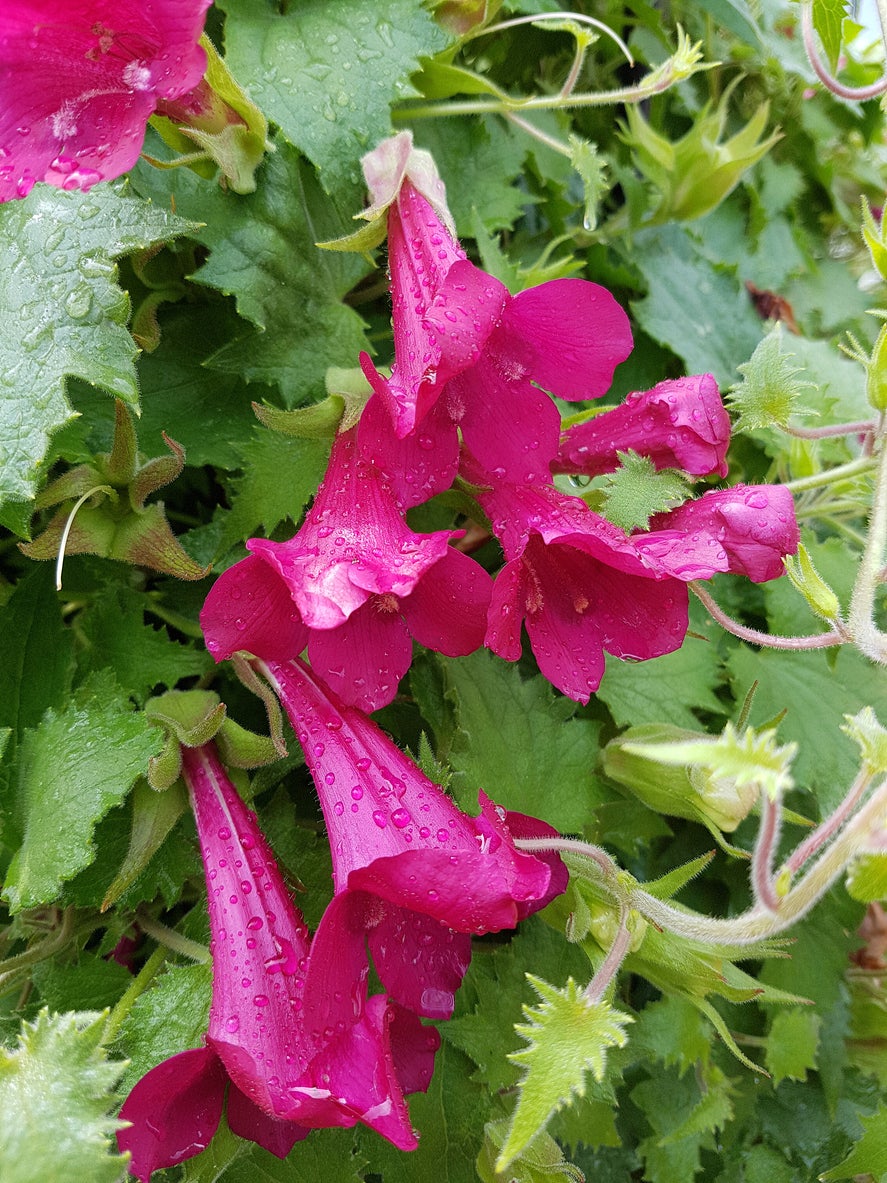Lophospermum Plant Care – How To Grow Creeping Gloxinia Plants


Sometimes you find an unusual plant that really shines. Creeping gloxinia (Lophospermum erubescens) is a rare jewel from Mexico. It is not terribly hardy but can be grown in containers and moved to a sheltered location in winter. Continue reading for some interesting creeping gloxinia info, including tips on growing and propagating this lovely vine.
Creeping Gloxinia Info
Creeping gloxinia is a relative of foxglove. Although it is commonly referred to as creeping gloxinia, it is not related to gloxinia plants. It has been placed in numerous genera and finally landed in Lophospermum. What is creeping gloxinia – a tender climbing plant with bright pink (or white), deeply throated flowers that coat the plant in deep color. Lophospermum plant care is fairly specialized, but the plant has no serious pest or disease issues.
Once established, creeping gloxinia is a startling spectacle of hot pink or white flowers and soft, velvety leaves. The vine can grow up to 8 feet (2 m.) in length and twines around itself and any object in its upward growth. The leaves are triangular and so soft you want to pet them.
The tubular, 3 inch (8 cm.) flowers are funnel shaped and very attractive to butterflies and hummingbirds. In USDA zones 7 to 11, it is an evergreen plant but is grown as a summer annual in cooler climes, where it blooms all season long until the first frost.
Growing Lophospermum as a colorful cover for a fence, trellis, or in a hanging basket provides a flowered shield that just keeps blooming.
How to Grow Creeping Gloxinia
This Mexican native plant needs well-draining, slightly sand soil in a full sun to partially sunny area. Any soil pH is fine with this uncomplaining plant. Creeping gloxinia grows rapidly and needs plenty of nutrients.
The plant often self-seeds and you can start new plants readily with seed sown in flats and kept at temperatures of 66 to 75 degrees F. (10-24 C.) The plant has a tuberous root system that can also be divided to propagate more plants. Take root cuttings in summer. Once flowering stops, cut back the plant. Mulch around in-ground plants to help keep the roots warm.
Gardening tips, videos, info and more delivered right to your inbox!
Sign up for the Gardening Know How newsletter today and receive a free copy of our e-book "How to Grow Delicious Tomatoes".
Lophospermum Plant Care
Gardeners in the north that are growing Lophospermum should grow the plant in a container so it can be easily moved indoors when frost threatens. Keep the soil moist but not soggy and use a time release, granular fertilizer in spring.
There are no listed pests or diseases of any concern but water from the base of the plant to prevent fungal issues. In cooler regions, it should be brought indoors or treated as an annual. Save seeds and you will be able to start another creeping gloxinia for the next season.

Bonnie Grant is a professional landscaper with a Certification in Urban Gardening. She has been gardening and writing for 15 years. A former professional chef, she has a passion for edible landscaping.
-
 How To Make A Bouquet Garni Or Herb Bundle For Cooking
How To Make A Bouquet Garni Or Herb Bundle For CookingIf you’re a great cook, you may have made an herb bundle before. If this is a new idea, learn how to add sparkle and interest to your dish with a bouquet garni.
By Amy Grant
-
 ‘Coral Charm’ Peony Care For Sublime Semi-Double Peonies With Lush Salmon Pink Flowers
‘Coral Charm’ Peony Care For Sublime Semi-Double Peonies With Lush Salmon Pink FlowersPeonies are known for their soft baby pink or magenta tones, but if plushy coral blooms are your thing, here’s our guide to the ultimate ‘Coral Charm’ peony care
By Tonya Barnett